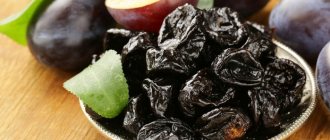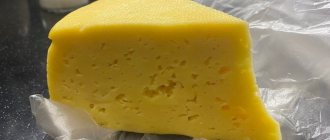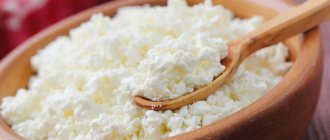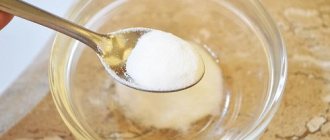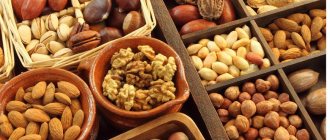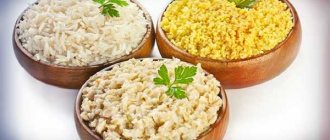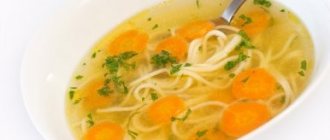Good day to all friends and readers of the Healthy Lifestyle blog. Today, while wandering around the supermarket, I came across an incredibly delicious bag containing several types of nuts, and bought it instead of cookies for tea. One of the customers standing nearby looked at me sadly and said with a sigh: “But I can’t have nuts - I have an ulcer.” I hastened to reassure her - after all, nuts are allowed in this state, but they need to be eaten correctly. And when I came home, I decided to devote a new article to the topic - nuts for stomach ulcers.
Treat stomach ulcers with walnuts
Gastric ulcer is a very common disease. This is a chronic disease characterized by periodic exacerbations.
It is for this reason that in this case a special diet is needed to complement drug treatment with special drugs. Of course, such nutrition also involves a lot of dietary restrictions.
But is it possible to eat walnuts if you have a stomach ulcer, or, despite all their usefulness, will patients have to give them up?
Walnuts for stomach ulcers
Experts say that walnuts for stomach ulcers should be consumed with caution. And during periods of exacerbation of the disease, they will have to be abandoned altogether.
The main reason for this ban lies in the fact that this product is extremely difficult to digest. In addition, due to the fact that walnut kernels are very hard, there is a high probability of injury to the delicate walls of the gastrointestinal tract, including the stomach.
If we are talking about a period of remission, then depending on the characteristics of each specific case, it is allowed to eat approximately 40-60 grams of fresh walnut kernels per day. But even in this case, when consuming nuts, they must first be crushed using a blender, mortar or other means.
In addition, it is especially important to chew walnuts thoroughly before swallowing if you have a stomach ulcer.
One more thing: with a disease such as a stomach ulcer, the consumption of nuts is in any case strictly limited. Moreover, if during periods of remission you can eat up to 60 grams of walnuts per day, then from other permitted varieties of nuts, that is, peanuts, almonds and pine nuts, you can include no more than 30 grams of delicacy per day.
Eating nuts for stomach ulcers
It should be noted right away that walnuts themselves are a very healthy product, which is in no way disputed. And products that contain a sufficient amount of protein must certainly be present in the daily menu of patients with ulcers.
With proper pre-treatment (crushing), nuts for stomach ulcers can have a regenerating and restorative effect. In addition, walnuts can relieve inflammatory processes in the digestive organ.
Experts recommend consuming walnuts during periods of seasonal exacerbations, that is, in the fall and spring, if, of course, this time coincides with periods of remission of a stomach ulcer. A maximum of five nuts per day is allowed and it is important not to exceed this portion.
Don’t forget that nut milk, which can be obtained from walnut kernels, is an excellent medicine. To prepare it, the kernels of a dozen nuts are poured into half a glass of warm boiled water, after which the entire mass is filtered and a couple of teaspoons of natural honey are added to it.
This medicine is taken one dessert spoon half an hour before each meal. Thanks to this treatment, the scarring of ulcerative formations is somewhat accelerated.
Sea buckthorn oil
In any case, with a disease such as a stomach ulcer, food should be consumed frequently and in small quantities. The daily menu requires foods that are rich in protein. At the same time, any spicy and hard foods, as well as all acidic foods, are completely prohibited.
Almost all patients with stomach ulcers are interested in the question of whether it is possible to eat nuts with this disease, and which ones. At the same time, they should all remember that this product is completely contraindicated during periods of exacerbations. But as soon as the acute symptoms disappear, you can eat nuts, although only in small quantities.
One way or another, with a stomach ulcer, a responsible approach to the nutrition of patients is necessary, since it is nutrition that can cause an exacerbation of the disease or, on the contrary, alleviate its course. Moreover, the effect will be almost instantaneous. The patient’s diet must certainly include foods that restore damaged gastric mucosa.
What varieties of nuts are useful for gastrointestinal pathologies?
The fruits of nut crops contain useful elements. They fortify the body, activate metabolism, and help treat various diseases. Nuts for ulcers are an exception.
The diet for local lesions of the mucous membranes of the stomach includes walnuts and pine nuts. The doctor allows the use of other types only during remission or completely prohibits them.
Walnuts
Walnut seeds are approved for use against peptic ulcers. Properly prepared kernels ease the course of the disease. They are crushed or prepared into vegetable milk.
30 - 40 g of nuts daily:
- strengthen the immune system;
- normalize digestion;
- prolong the time of “attenuation” of the disease;
- minerals promote the production of hemoglobin, provide access to oxygen, and activate cell division;
- the size of ulcers decreases due to healthy epithelium.
Nut milk contains protein necessary for peptic ulcers. Helps restore damaged membranes due to the division of healthy epithelial cells, suppresses bacteria.
How to cook:
Soak 50 g of kernels for 5 hours, grind with 250 ml of water in a blender. Strain as desired. Take 100 g half an hour before meals. Can be refrigerated for 3 days, but it is better to drink fresh milk.
The question of whether it is possible to eat walnuts for a stomach ulcer is removed. You need to eat the “royal” fruits. Additional therapy, with their help, gives a positive result.
Almonds for ulcers
Almonds contain many useful elements: vitamins, proteins, calcium, iron. They have an enveloping effect. Does not increase acidity.
But in case of acute peptic ulcer disease, you should not eat almonds. Solid particles injure the irritated walls of the stomach and are difficult food to digest.
Permission to use almond kernels is given by a doctor. Violation of the ban can aggravate peptic ulcer disease.
Cashew
Cashew nuts are not among the permitted products for violations of the integrity of the gastric linings. A high percentage of oil reduces the absorption of kernels.
Some gastroenterologists recommend cashews for their acid content that destroys Helicobacter bacteria. They infect the duodenum and stomach. Eating nuts is allowed during the period of remission.
Permission is individual. Failure to comply with the doctor's instructions will cause new irritation and increased mucous damage.
Peanut
The legume peanut increases blood clotting. Its components improve digestion, normalize metabolism, and the functioning of the nervous system. Exacerbation of peptic ulcer disease is a contraindication for its use.
Beans increase acidity, the affected mucous membranes will “respond” with pain: sharp, aching, periodic or constant. The pink film of the nut is not digestible. Roasted peanuts are not recommended; fresh peanuts contain allergens.
A doctor's recommendation is required.
Pine nuts
Cedar pine seeds are allowed for consumption when the disease subsides. They:
- completely absorbed;
- does not cause inflammation;
- are a source of protein and vitamins;
- activate scarring of ulcers;
- relieve pain.
Fresh pine nuts are crushed before consumption or made into a milk drink.
Hazelnuts for ulcers
Thanks to its chemical composition, hazelnuts remove harmful substances from the body, provide vitamins, and improve immunity. A small amount of nuts is allowed. They are crushed before use.
Nutmeg
Two crushed nutmegs are allowed if the disease is calm. The high calorie content of the product slows down digestion.
Despite the fact that nutmeg kernels normalize metabolism, relieve pain, and increase immunity, doctors advise taking them a little or removing them from the diet completely.
Almond
Sweet almonds are also definitely useful for peptic ulcers of the digestive organ. In addition to the high protein content traditional for nuts, it boasts a high content of calcium and vitamin E, which makes it an excellent healing product for ulcers caused by increased acidity of stomach juice. You should also eat it in this form of the disease because almonds have a good enveloping effect and can prevent the irritation that certain foods have on the mucous membrane.
Is it possible to eat nuts for stomach and duodenal ulcers?
Stomach ulcer is a chronic disease, with periodic exacerbations, usually several times a year. Gastroenterologists prescribe a special diet with certain restrictions (for example, coffee will have to be replaced with a coffee drink).
Many people are interested in whether it is possible to eat nuts if they have a stomach ulcer. Many nuts are a recognized delicacy, however, the fact that they can also be a medicine is not generally known.
Doctors' recommendations
A stomach ulcer is a disease that requires adherence to a certain diet. Food quickly enters the stomach. And if the foods are irritants, this can lead to abscess complications.
Consequently, the patient’s condition depends on a correctly selected nutrition plan and correct adherence to the recommended diet. To create a personal diet, you need to have information about what you can eat with an ulcer.
Essential principles of the table
Sample menu for 3 days for stomach ulcers
A correctly prepared menu will allow you to satisfy your hunger, gain great pleasure from the meal, at the same time have an excellent mood and avoid deteriorating health.
The most important principles of the diet:
- The total nutritional value of food should not exceed 3000 kilocalories.
- The table must be balanced. Therefore, food must contain the optimal amount of nutrients.
- You need to eat more, but in small portions.
- The addition of salt is removed altogether, or its use is shifted to the smallest amount.
- Heat treatment of ingredients is allowed. Fried, canned, smoked food is turned off.
- Pickles must be fresh.
- Foods that contribute to the formation of gases are turned off.
- Consumption of alcohol and carbonated drinks is prohibited.
- The amount of water consumed is increased to 2 liters.
At first glance, from what you can eat with a stomach ulcer, all pickles look tasteless. But the list of overproduced products is quite large.
Therefore, if you use a little imagination, it is possible to make many not only healthy, but also delicious dishes. Most patients are interested in the question of whether they can consume milk if they have a stomach ulcer.
Experts say that milk can be used in any form for this diagnosis. But if the disease worsens, you should limit foods with a high percentage of fat content.
The benefits of lactic acid products
Eating dairy products for stomach ulcers
For stomach ulcers, kefir product is recommended for use. It should be noted that kefir is much more likely to be poisoned compared to milk.
The use of fermented milk gives rise to quite a lot of controversy. As a rule, lactic acid products are allowed to be consumed in stable remission.
But at the same time you must follow the prescribed order. In order not to cause damage to the body, it is necessary to observe a number of nuances:
- Only fresh fermented milk products are recommended for consumption.
- It is not recommended to reheat. The optimal temperature for use is room temperature.
- When using kefir, the main thing is not to overdo it. Cannot be combined with other foods. The daily dose should not exceed 1 glass.
- In case of exacerbation of the disease, kefir is prohibited for consumption.
There are many dairy products that are allowed for peptic ulcers.
- Cottage cheese should be present in the food of the sick person. Since cottage cheese has a rare composition and significant biological value, therefore, it has no contraindications for use. Essentially, curd is coagulated protein that has been separated from whey. Cottage cheese is rich in calcium and phosphorus, iron, and vitamins.
- Cottage cheese with high fat content contains vitamin A, which is of great importance for ulcerative diseases. Curd products can be consumed daily.
- Cheese has about 25% protein. The product is quite easy to digest. This product is high in calories. Due to this, a small portion of cheese (100 g) helps to satisfy the daily requirement.
- Yogurt is made from milk powder. An ulcer is formed due to infection of the body by the bacterium Helicobacter pylori. Yogurt helps suppress the development of this bacteria. It is very important to make the right choice of yogurt. Yogurt must be natural, without high sugar content. Experts recommend consuming sugar-free yogurt.
- Butter is the only product whose structure includes animal fat, which is allowed for peptic ulcers. It can only be used fresh as an addition to the main dish.
What to do with flour products
Flour products for duodenal ulcers
Regarding bread, it is better to use crackers. For baked goods, you can eat unsalted dough with the addition of apple or cottage cheese.
Many lovers of flour products are interested in the question: is it possible to eat dumplings with an ulcer? You should not lose sight of the fact that such a combination of products is quite difficult to over-pour. And for peptic ulcers, the key function of healing is to reduce the load.
Semi-finished products deserve special attention. Eating dumplings if you have a stomach ulcer of this kind is strictly prohibited. Because semi-finished products usually contain additives and vegetable proteins. Such components are undesirable not only for a sick person, but also for a healthy person.
Benefits of peanuts for the body
One, even the smallest change in diet can significantly affect a person's health.
Thus, according to research, daily consumption of 30 grams of peanuts or peanut butter can reduce the risk of developing many chronic diseases.
This effect is achieved due to the combined action of the beneficial substances that make up peanuts - unsaturated fats, fiber, antioxidants, arginine and magnesium, which play an important role in the prevention of diseases. And all these substances can be obtained by simply adding a handful of peanuts to your diet.
Let's take a closer look at the benefits of peanuts.
We recommend
“Vitamin content in apples: calorie content, health benefits, contraindications” Read more
Nuts and cardiovascular disease
Heart disease is the number one cause of death among men and women worldwide. Can peanuts protect humanity from cardiovascular disease? Maybe!
For example, a clinical study conducted at Purdue University found that eating about three ounces (80 grams) of peanuts per day significantly increased the intake of magnesium, fiber, folic acid, vitamin E, copper and arginine, which are important for heart health, and phytosterols that help reduce blood pressure. cholesterol.
It has been proven that adherence to a Mediterranean diet with the addition of olive oil or various nuts for 5 years led to a 30% reduction in the risk of CVD and a significant reduction in blood pressure compared to the control group.
Study
: Effect of the Mediterranean diet on blood pressure in the PREDIMED trial: results from a randomized controlled trial
What exactly are the properties of peanuts that help your heart?
- Reducing saturated fats and replacing them with monounsaturated fats helps lower cholesterol levels and thereby prevent atherosclerosis. Moreover, this strategy has been shown to help reduce the risk of coronary heart disease. One easy way to implement this strategy is to use peanut butter on toast instead of butter or margarine spreads.
- Magnesium, potassium, resveratrol, arginine have a positive effect on lowering blood pressure. But cardiologists recommend eating unsalted peanuts, because with too much salt, the harm of roasted peanuts will outweigh the benefits.
- Antioxidants (such as vitamin E) help protect cells from free radicals, one of the causes of cardiovascular disease.
- Arginine helps prevent artery damage.
- The action of magnesium, vitamin E, arginine, phenolic compounds and fiber help reduce the level of inflammation, and therefore the risk of developing cardiovascular diseases.
Nuts and type 2 diabetes
It is extremely important for people with diabetes to monitor the glycemic index of foods. Peanuts have a low glycemic index (level - only 14), which is about half that of other legumes. Low glycemic index foods have also been shown to significantly improve glucose control in patients with type 2 diabetes. Eating peanuts
and peanut butter with breakfast have been shown to prevent blood sugar spikes and help suppress appetite during lunch.
This is enough to safely include peanuts in your diet for diabetes.
Peanuts, Alzheimer's disease and dementia
Peanuts are an excellent source of niacin and a good source of vitamin E, two nutrients that have been shown to prevent Alzheimer's disease and age-related cognitive decline.
One study found that in nearly 4,000 people aged 65 and older, dietary niacin slowed the rate of cognitive decline. In another study, 815 people over 65 without Alzheimer's disease were followed for almost four years. Those who ate the most vitamin E from foods were found to reduce their risk of Alzheimer's disease by 70%.
Study
: A Prospective Association of Nut Consumption with Cognitive Function in Chinese Adults Aged 55+ _ China Health and Nutrition Survey
Nuts and cancer
Oncology is a very complex and broad topic, and it is impossible to single out any unique anti-cancer products. There are many different studies on the influence of food on the development of cancer, but they are ambiguous.
For example, there was no connection between the consumption of all types of nuts, peanuts, and peanut butter and the risk of developing pancreatic cancer
However, analyzes of some studies demonstrated that the highest level of total nut intake (≥10 g/day) was associated with a 45% reduction in the risk of some breast cancer subtypes compared with the lowest level of intake (0 g/day). But nut consumption was not associated with the incidence of other breast cancer subtypes or the overall risk of breast cancer.
Thus, despite the presence of antioxidants, healthy fats, phytosterols, and dietary fiber in nuts, a clear relationship between nut consumption and the prevention of cancer has not yet been established.
Targeted nutrition tips
that will increase your energy level by 10 out of 10
From TOP nutritionists of the MIIN
Get tips
Peanuts and gallstones
Gallstones occur when the gallbladder does not empty properly. One risk factor for gallstones is being overweight or obese and having high triglycerides or low levels of “good” HDL cholesterol.
One study of more than 80,000 women found that those who ate peanuts and peanut butter five or more times a week reduced their risk of gallbladder disease by 25%.
Study
: A prospective cohort study of nut consumption and the risk of gallstone disease in men
Of course, the point here is not the peanuts themselves, but the full range of beneficial substances that affect cholesterol levels, and therefore help prevent the development of gallstone disease. Further evidence that eating peanuts in moderation has a beneficial effect on the functioning of the entire body.
Can I eat peanuts if I have a stomach ulcer?
Nuts, including peanuts, should not be eaten in cases of exacerbation of a stomach ulcer, because they are very difficult to digest. In addition, due to its hard consistency, the risk of injury to the delicate gastric mucosa is very high.
True, the answer to the question whether it is possible to eat peanuts for a stomach ulcer during remission will be positive - experts allow eating peanuts at this time per day, but not more than 30 grams per day. In this case, it is very important to chew the nuts especially carefully or simply grind them using a blender before eating.
All other types of nuts are also not recommended for stomach ulcers, but during remission, daily consumption of up to 10 grams of almonds, pine nuts or fresh walnuts is allowed.
Today, stomach ulcers are a very common disease that is not only chronic, but also characterized by periodic exacerbations. At the same time, the disease itself requires complex treatment, which involves not only a course of taking medications, but also the obligatory adherence to a therapeutic diet.
How many peanuts can you eat per day?
Peanuts are very healthy, but they are high in calories, and, like any other product, they have contraindications. Therefore, when consuming it, it is important to know when to stop.
Regular consumption of peanuts equivalent to 28-30g (1 serving) 5 times a week is considered safe and associated with a significant reduction in the risk of cardiovascular disease.
It is important to remember that since 28-30 g of nuts provide an energy intake of at least 160 kcal, adding this amount to the diet daily without excluding other foods can lead to a calorie surplus and weight gain.
Contraindications
To stabilize the condition of the stomach, nuts for ulcers are prohibited:
- during an exacerbation;
- for allergies, personal intolerance;
- for diseases of the intestines and pancreas;
- increased blood clotting;
- for thrombosis, psoriasis.
An increase in consumption leads to the development of wounds on the mucous membranes, destruction of blood vessels, and bleeding.
Nut therapy is an addition to basic treatment, diet, and a healthy lifestyle. Mandatory adherence to the recommendations of the attending physician and the rules of food consumption is the key to a complete recovery. The ulcers are covered with a fibrinous layer. During healing, it is rejected, the wounds are cleaned and covered with healthy epithelium.
Are nuts allowed for stomach ulcers?
Good day to all friends and readers of the Healthy Lifestyle blog. Today, while wandering around the supermarket, I came across an incredibly delicious bag containing several types of nuts, and bought it instead of cookies for tea.
One of the customers standing nearby looked at me sadly and said with a sigh: “But I can’t have nuts - I have an ulcer.” I hastened to reassure her - after all, nuts are allowed in this state, but they need to be eaten correctly. And when I came home, I decided to devote a new article to the topic - nuts for stomach ulcers.
What is the best way to eat nuts?
Treatment of stomach ulcers requires a special, balanced diet, which may well include a variety of nuts. But one should take into account the fact that the diet is selected taking into account the individual characteristics of a person.
Raw, roasted, salted - which peanut is the healthiest?
Roasted peanuts are considered healthier than raw peanuts. Is it so? Every time you ask the question “what is healthier?” First you need to understand “why?” What effect do you want?
Salted peanuts are not the healthiest option, especially for people at high risk of heart disease.
Peanuts fried in a dry frying pan or in oil with a high smoke point are considered healthier than raw ones, but they are higher in calories. But at the same time, it contains antioxidants activated by heat treatment and is less likely to retain pathogens that can be found in raw peanuts.
Raw peanuts are lower in calories than roasted peanuts. And perhaps this is important to you if you are on a diet and control the overall calorie level of your diet. But, unroasted kernels are slowly digested and can cause problems with the gastrointestinal tract. Assess the condition of your gastrointestinal tract if you choose raw nuts.
In addition, the shell of peanut kernels is a strong allergen, and if you are prone to allergies, then you should also avoid raw peanuts.
Everything is purely individual, but when assessing the possible risks of eating raw peanuts, we can conclude that for most people, unsalted roasted peanuts are healthier than raw ones.
In what form should I eat it?
To treat ulcers, it is important to eat a balanced diet, which may include different types of nuts. The doctor selects a diet, taking into account the individual characteristics of the patient. Some patients do not experience any unwanted effects after eating whole fruits, while others experience pain. As a result, if you are diagnosed with a stomach ulcer, you should carefully chop the nuts before use.
If, after grinding, the kernels are irritating, they should be replaced with almond or peanut oil. It is important that the products are of high quality, without being overloaded with preservatives or sugar. You can prepare pastas yourself at home. To do this, you need to grind the fruits in a blender for a long time, gradually increasing the speed. You should get a creamy mass. For taste, you can dilute with sugar or honey. Nut butter should be stored in the refrigerator.
Nuts for stomach ulcers - how to use them correctly?
As soon as it is possible to reduce the painful symptoms of a stomach ulcer, it is recommended to begin introducing pine nuts into the patient’s diet. It is important when introducing such food products not to injure the damaged mucous membrane, causing as little irritation as possible.
Pine nuts must be as fresh as possible, of high quality, without visible defects of spoilage or spoilage. The nuts are first doused with boiling water, then washed in running water. After slightly drying, carefully grind, only after grinding the product is ready to serve to the patient.
Are hazelnuts allowed for stomach ulcers?
Hazelnuts themselves are not a dangerous product for stomach ulcers, if you do not take into account their hard consistency. But this drawback can be easily eliminated if you simply chop the nuts thoroughly before eating them.
In addition, hazelnuts, along with other types of nuts, are strictly prohibited against the background of an exacerbation of ulcers. But at other stages of the development of the disease, it may well be present in the daily diet.
So, you can eat hazelnuts if you have a stomach ulcer, but only with the right approach to consuming them. That is, they eat it when there is no exacerbation, and also in small quantities.
In this case, its kernels will not only be harmless, but even useful. After all, they effectively cleanse the body of harmful substances accumulated in it.
Moreover, its consumption will help restore tissue and strengthen the immune system. Even taking into account its beneficial properties, this product should not be abused under any circumstances.
Otherwise, all its beneficial effects will come to naught.
The peculiarity of peptic ulcer disease is not only its chronic course, but also frequent exacerbations. Therefore, the approach to its treatment must certainly be comprehensive.
That is, in addition to the medication course, patients are also prescribed a special diet. In particular, it ensures sufficient protein in the daily menu, and also eliminates the consumption of hard and tough foods.
So, can you eat hazelnuts for a stomach ulcer? After all, it’s not easy to resist this delicious nut.
What nuts can you eat if you have a stomach ulcer?
Among the many varieties of nuts for stomach ulcers, walnuts are considered the most useful. After all, they contain about 15% protein.
Against the background of gastric ulcer, walnuts have a clear regenerative and general strengthening effect, and also nullify the inflammatory processes occurring in this digestive organ. When consuming them, experts recommend eating several kernels on an empty stomach.
Walnut milk will also be useful, for the preparation of which crushed walnut kernels are poured with warm water, infused, and then filtered. Next, add a little honey to the liquid.
Such a simple but useful medicine will promote rapid scarring of ulcerative formations.
Another type of nuts, pine nuts, are known for their soothing and restorative effects, as well as their regenerating effect. It is also recommended to eat them thoroughly crushed and mixed with natural honey.
Peanuts and children's nutrition
It is especially important for children to receive enough nutrients for growth and development. But is this true in most cases? Unfortunately no.
Often children eat without a routine, may not consume enough protein and snack a lot on “empty calories”, which are completely unbeneficial and contribute to the development of multiple deficiencies and obesity.
But children's love of snacking is a great way for parents to provide their growing bodies with everything they need for proper growth and development. Peanuts are important to children
fry due to the risk of allergies.
To do this, you need to make snacking “smart”. It's something delicious, low in empty calories, rich in vital vitamins and minerals, and leaves you feeling full.
Peanuts are a great example of a “smart snack,” and there are some interesting studies on this:
- Children who ate peanuts or peanut butter at least once a week were less likely to be overweight, consumed more vitamins and minerals, and had lower blood cholesterol levels than children who did not eat peanuts.
- Adding peanut butter to vegetables encourages children to eat more vegetables. How did you find out? Two classes of Year 6 children were offered fresh carrots, celery and broccoli at recess and allowed to eat as much as they wanted. In this case, one class was given peanut butter as a dip for vegetables, while children in the second class were given only vegetables. After four months, the researchers measured the amount of vegetables the children consumed. They found that children who ate buttered vegetables increased their vegetable consumption by 31%. And the children who were not offered butter ate significantly fewer vegetables. Are your children having trouble eating vegetables? Offer them peanut dip!
- The combination of protein and healthy fats helps children feel full and satisfied, have a boost of energy, while maintaining stable blood sugar levels.
The 2005 US Dietary Guidelines call attention to the lack of such nutrients
like vitamin A, vitamin E, vitamin C, calcium, magnesium, potassium and fiber.
USDA data shows that eating a daily serving of peanuts or peanut butter can help children and adults meet their nutritional needs.
At what age can you eat peanuts? There is no clear answer to this question.
There is an opinion that peanuts will not benefit children under 3 years of age; the child’s body will not be able to digest and absorb them.
Previously, it was recommended to introduce peanuts into a child’s diet as late as possible due to the risk of developing an allergy, but according to new data, this practice, on the contrary, can lead to its development.
Peanut consumption by children under 3 years of age should be under the supervision of a physician.
Cashew
This variety of nuts has a delicate characteristic buttery taste and stores a lot of vitamins (A, C, D, B6, B12), as well as microelements: iron, magnesium, calcium. They also contain Omega-3 acids, rare for products of plant origin, which have a strong anti-inflammatory effect, so eating cashews will quickly have a healing effect on those places of the mucous membrane where ulcers have formed.
These nuts also act as a natural antibiotic, so they are useful as an adjuvant in the treatment of peptic ulcers if they are caused by Helicobacter pylori infection.
Doctors' recommendations
In case of a stomach or duodenal ulcer in the acute stage, doctors clearly prohibit the consumption of nuts, since solid particles of the kernels can severely injure the already inflamed mucous membrane of the stomach or intestines.
Another reason for the ban is the rather rich chemical composition: even if you grind them well in a blender, some active substances can aggravate the problem with the stomach (intestines). In addition, protein (up to 15% of the composition) is a heavy food even for a person with a healthy digestive tract.
The only exception to this prohibition is the walnut: several medicines recommended by both traditional and folk medicine can be prepared from it. The list of types that can be consumed during the period of remission increases to four types:
- walnuts,
- almond,
- cedar,
- peanut.
Of course, we are talking about fresh seeds, not dried or roasted. Other types are not recommended for use for stomach and duodenal ulcers.
First, let's try to understand what these four types of fruits are. nutritional value for our body.
GALINA SAVINA: “How easy it is to cure a stomach ulcer at home in 1 month. A proven method is to write down the recipe. » Read more >>
Useful video
The benefits of nuts are discussed in this video.
Pine nuts
Pine nuts are indispensable for stomach ulcers. They have a varied vitamin composition, which is completely absorbed by the weak digestive organ. Doctors advise eating these kernels not only as a treat, but also as a medicinal product.
Cedar fruits go well with homemade honey. In a compartment, this is the most valuable medicine for the tone of the whole body. A mixture of honey and cedar kernels should be eaten 1 teaspoon 3 times a day, during meals.
Chemical composition and value
The biochemical composition of fruits can differ quite greatly from each other. Protein in the above four types can be contained from 14% in pine kernels to 21% in almond kernels, the percentage of fat does not exceed 45–70%, and carbohydrates - 15% of the total mass.
The calorie content is very high, on average 640–700 kcal due to the high fat content of the product. The concentration of other nutrients is also quite high, which are no less important in terms of quality for our body.
For example, carotene, omega-3 fatty and other types of acids, tannins, phytoncides, essential oils and many others. It cannot be said that nuts are very rich in vitamins; walnuts stand out a little for their vitamin B6 content - about 35% of the daily requirement is contained in 100 g of kernels.
What specific recommendations and recipes with nuts can be applied in practice to treat and alleviate the condition of this disease.
Features of the chemical composition of peanuts, calorie content
| The nutritional value | Contents per 100 g |
| Calorie content | 552 |
| Squirrels | 26,3 |
| Fats | 45,2 |
| Carbohydrates | 9,9 |
| Water | 7,9 |
| Cellulose | 8,1 |
| Glycemic index | 15 |
Calorie content
Peanuts are very high in calories, you need to remember this. Always weigh the beneficial properties of peanuts against their potential harm.
Protein
You may hear that peanuts are a high molecular weight protein. This means that peanuts contain more protein than any other nut, and are superior to many not only plant but also animal products. For comparison, the protein in peas is only 5 g per 100 g, in a chicken egg - 13 g per 100 g, and in cow's milk - 3.4 g per 100 g. Peanuts will be useful for both people who do not consume animal protein and adherents traditional food system.
Fats
Peanuts are a rich source of healthy monounsaturated fats. But why are they useful? And what other fats are there? Let's figure it out!
Fats are divided into unsaturated and saturated. Unsaturated fats are either monounsaturated or polyunsaturated. Monounsaturated fats remain liquid at room temperature and are found in plant foods: peanuts, olive oil, avocados. Monounsaturated fats have been shown to lower total cholesterol and “bad” LDL cholesterol while maintaining “good” HDL cholesterol. Peanuts are rich in this type of fat.
Polyunsaturated fats are found in fatty fish - salmon and mackerel. Polyunsaturated fats also lower total cholesterol and “bad” LDL cholesterol, but may not have the same beneficial effects on “good” HDL cholesterol.
Saturated fat is found mainly in animal products such as butter, meat, milk and cheese. At room temperature it remains solid.
We recommend
“Ayurveda: what it is, what diseases it treats, basic nutrition according to Ayurveda” Read more
Trans fats are found in foods such as cookies, crackers, chips, products with margarine, and baked goods. Trans fats tend to increase total cholesterol and “bad” LDL cholesterol, and can also lower “good” HDL cholesterol. There are no trans fats in peanuts and peanut products.
Cholesterol is a fatty compound found only in some animal products, such as meat, eggs and full-fat dairy products. Peanuts and peanut butter are plant-based foods that do not contain cholesterol.
To summarize, peanuts are a rich source of healthy unsaturated fats and are free of cholesterol and trans fats, which can be harmful to health if consumed in excess.
Carbohydrates
Peanuts are a very low-carbohydrate product, containing only 9.9 g of carbohydrates per 100 g.
Cellulose
Provided that peanuts contain almost no carbohydrates, 100 grams of the product contains 27% of the daily fiber intake, and this is more than 100 grams of oatmeal! This fact makes peanuts an excellent source of fiber, which is necessary for the correct functioning of the gastrointestinal tract and the formation of a feeling of satiety.
Vitamin content
| Vitamins | Chemical name | Content per 100 grams | Percentage of daily requirement |
| Vitamin B1 | thiamine | 0.74 mg | 49% |
| Vitamin B2 | riboflavin | 0.11 mg | 6% |
| Vitamin C | ascorbic acid | 5.3 mg | 8% |
| Vitamin E | tocopherol | 10.1 mg | 101% |
| Vitamin B3 (PP) | niacin | 18.9 mg | 95% |
| Vitamin B4 | choline | 52.5 mg | 11% |
| Vitamin B5 | pantothenic acid | 1.77 mg | 35% |
| Vitamin B6 | pyridoxine | 0.35 mg | 18% |
| Vitamin B9 | folic acid | 240 mcg | 60% |
| Vitamin H | biotin | 40 mcg | from 90% |
It’s not for nothing that peanuts are considered to contain 0 “empty” calories.
Peanuts are rich in vitamins!
100 grams of peanuts contain:
- daily dose of vitamin E, the so-called vitamin of youth;
- daily dose of biotin, critical for the condition of the skin and hair;
- daily dose of niacin, which plays an important role in the functioning of the gastrointestinal tract and nervous system;
- half the daily dose of thiamine, which is important for the functioning of the whole body;
- half of the daily dose of pantothenic acid necessary for skin healing;
- For women, peanuts are especially beneficial due to folic acid, an essential vitamin necessary for the proper development of the fetus.
Mineral content
| Minerals | Content per 100 grams | Percentage of daily requirement |
| Potassium | 658 mg | 26% |
| Calcium | 76 mg | 8% |
| Magnesium | 182 mg | 46% |
| Phosphorus | 350 mg | 35% |
| Sodium | 23 mg | 2% |
| Iron | 5 mg | 36% |
| Zinc | 3.27 mg | 27% |
| Selenium | 7.2 mcg | 13% |
| Copper | 1144 mcg | 114% |
| Manganese | 1.93 mg | 97% |
The mineral composition of peanuts is surprising!
The lowest sodium content is 2% of the daily dose. The remaining minerals are presented in much higher concentrations and their importance for the body is difficult to overestimate:
Potassium -
essential for maintaining fluid balance, normal blood pressure and blood sugar
Calcium
- an essential element for the formation of bone tissue
Magnesium
- an element necessary for all processes in the body, the consumption of which is especially important during stress
Phosphorus
- the main material for the structure of brain cells, necessary for the absorption of calcium
Iron
- participates in the production of red blood cells, energy generation, and is part of many proteins
Zinc -
necessary for local immunity of the skin, mucous membranes, accelerates wound healing, prevents skin inflammatory diseases (acne, eczema, neurodermatitis, psoriasis, etc.)
Selenium -
necessary for the normal functioning of the immune system and thyroid gland.
Copper
- assistant to enzymes, proteins, is part of a large number of different substances
Manganese
- promotes normal growth and development of young organisms, participates in the growth of bones, connective tissue, hematopoiesis, synthesis of vitamin C, insulin
And all these beneficial substances are found in peanuts!
Amino acid content
| Essential amino acids | Contents per 100g | Percentage of daily requirement |
| Tryptophan | 285 mg | 114% |
| Isoleucine | 903 mg | 45% |
| Valin | 1247 mg | 36% |
| Leucine | 1763 mg | 35% |
| Threonine | 744 mg | 133% |
| Lysine | 939 mg | 59% |
| Methionine | 288 mg | 22% |
| Phenylalanine | 1343 mg | 67% |
| Arginine | 2975 mg | 60% |
| Histidine | 627 mg | 42% |
Peanuts contain all the essential amino acids that are not synthesized in the body and must be supplied with food.
One particularly high-release amino acid found in peanuts is the conditionally essential amino acid arginine, which dilates blood vessels, helps lower blood pressure and the risk of chronic disease, and is involved in insulin production.
What else?
Phytosterols
- a group of natural compounds found in plant cell membranes. They are structurally similar to cholesterol and, when consumed in food, compete with it for absorption in the digestive system, thereby blocking its absorption and reducing cholesterol levels in the blood. It is believed that consuming phytosterols in recommended amounts reduces total cholesterol by up to 10% and “bad” LDL cholesterol by up to 14%.
Resveratrol
An antioxidant best known for its anti-aging effects, it also helps with weight loss and reduces the risk of cancer, diabetes and kidney disease.
Oleic acid
(omega-9) and
linoleic acid (omega-6)
are important for protecting blood vessels from the formation of cholesterol plaques, preventing atherosclerosis and regulating lipid metabolism.
But as with everything, balance is important. Despite all the benefits of omega-6, its excess is dangerous for health, in particular due to the pro-inflammatory effect it has on the body.
According to dietary guidelines, a healthy ratio of omega-6 to omega-3 is 5-10/1, but current trends indicate an excess of omega-6 in the diet. This is due to insufficient consumption of fish, with a passion for processed foods, industrial baked goods, fast food and other sources of fat.
Recipes for treating and preventing ulcers
Walnuts have been used in the treatment of stomach ulcers for a long time, so many recipes have been preserved. The fruits of the tree have been recommended for use since the times of Hippocrates, Avicenna and ancient Egyptian doctors. Below is a list of recipes from the simplest to those that are a little more complicated.
- Nut milk. Grind the seeds of 10–20 nuts, pour them with warm water (100–150 ml), strain the mixture, add 2 tsp. honey, mix. Take the medicine 30 minutes before. before meals, one dessert spoon. This will speed up scarring.
- Eat 5-6 nuts (no more) on an empty stomach in the morning for 1 month. This is an excellent prevention of exacerbations. At the same time, you will also improve your liver health.
- Mix with honey and ghee. You need to put 300 g of each ingredient in a pan and leave it at one hundred degrees for 20 minutes. into the oven. Then mix well and cool, take a tablespoon 30 minutes before meals three times a day.
- Mixture with dried fruits, lemon and honey. You need to thoroughly chop and mix 1 kg of dried apricots, raisins, kernels, 4-5 lemons, then mix in 1 kg of honey. Store in glass jars in the refrigerator, take a tablespoon 30 minutes before. before meals three times a day until it runs out. The pause between courses is 1 month.
- Suitable for the treatment of duodenal ulcers. It is necessary to grind and mix 0.5 kg of nut seeds and raw carrots, then add melted butter and liquid honey - 0.5 kg each. Use 1 tbsp. l. in 30 min. before meals three times a day until the mixture runs out.
Peanuts and weight loss
Peanuts are a very high-calorie product that is often removed from the diet when losing weight, like other nuts and oils.
But is this right?
In fact, you can eliminate all high-calorie foods and lose weight thanks to the created deficit. But will it be possible to maintain the result obtained? And is such weight loss safe for health?
Of course, the most important tool for losing weight is a calorie deficit. But your body will work better and more efficiently when it receives all the necessary nutrients for life and health along with energy. And adequate supply of nutrients is especially important when there is a shortage of incoming energy.
When losing weight, it's important to understand that not all calories are equal.
It's counterintuitive, but as people consume more calories and gain extra pounds, the body loses nutrients and becomes deficient.
This happens precisely because of an excess in the diet of high-calorie foods that are poor in nutritional elements, the so-called “empty” calories. Which create an energy surplus, but do not contain the nutrients necessary for the healthy functioning of the body. As a result, in addition to excess weight, people develop deficiency conditions. This is one of the reasons why excess weight often goes hand in hand with chronic diseases. Thus, people who consume less magnesium are more likely to have increased markers of inflammation and the risk of metabolic syndrome, insulin resistance, diabetes and heart disease.
has been shown to significantly increase fiber, magnesium, folic acid, vitamin E, copper and arginine.
The 2005 US Dietary Guidelines report recommends that most people choose meals and snacks that are high in nutrients but low to moderate in energy. The report says what we eat is just as important as how much we eat.
The next most important tool for losing weight is enjoying food. After all, it is often not possible to maintain the results obtained from a diet due to its blandness and lack of emotional saturation with food.
Have you ever been so hungry that you were ready to eat everything in sight? Or, conversely, did you have a refrigerator full of food, but none of the food available satisfied you? These 2 situations describe 2 different states:
- hunger
- physiological need for nutrients and energy; - Appetite
is the desire for certain foods to satisfy more psychological than physiological needs.
The ability to recognize hunger and appetite is the most important tool after calorie deficit for losing weight and maintaining weight.
After all, if you find foods that satisfy not only your hunger, but also your appetite, you will naturally reduce the number of calories you consume and can easily maintain the desired deficit, without suffering or stress.
Peanuts, although high in calories, can be an excellent part of your weight loss meal plan.
There is a ton of research to support the benefits of peanuts for weight loss, both from a nutritional and emotional satisfaction point of view, here are some of them:
- Adding peanuts and peanut butter to your daily diet while controlling your caloric intake has been shown to help you stay full and satisfied, have less need for empty calories, and thereby keep your overall calorie intake on target.
Study
: Effects of chronic peanut consumption on energy balance and hedonics
- It was found that after regular eating peanuts
over 19 weeks, resting energy expenditure was 11% greater than at baseline.
- Another interesting study compared the effects of peanuts and potato chips. Study participants were given either peanuts as a snack, then invited to a buffet and measured the amount and type of food they chose. Participants also reported how hungry or satisfied they felt before and after each snack. Participants reported feeling equally satisfied after each snack, but they consumed significantly fewer calories after eating peanuts. They consumed 17% to 21% fewer calories during the buffet meal and 9% to 11% fewer calories over the four days after the peanut snack compared to the potato chip snack. Based on their findings, the authors concluded: “Peanuts are an ideal high-fiber, high-protein, high-unsaturated fat snack, and their inclusion in the diet may help stabilize energy balance and provide a healthy snack choice for weight management.”
Study
: Lower energy intake following consumption of Hi-oleic and regular peanuts compared with iso-energetic consumption of potato crisps
So, you can safely include peanuts or peanut butter as a nutritious addition to your diet. The main thing to remember is the permissible quantities.
Allowed daily amount of peanuts in the absence of contraindications
- a handful of about 30 grams or 2 tablespoons of peanut butter.
Application
Not only ripe nuts are used for treatment purposes. Green fruits and peels, roots, bark and foliage of trees, shells and internal partitions, etc. are usefully used. They are used for preparing tinctures, decoctions, rubs, compresses and for food.
Walnut partitions
A medicinal tincture is prepared from the partitions of walnuts. The separating plate present in the walnut kernel is usually discarded. However, it is a medicinal component used for many diseases. For example, an alcohol tincture on the partitions helps treat colitis. To prepare it you will need 3 tablespoons of crushed partitions and 0.2 liters of vodka. The raw materials are filled with vodka and infused in the dark for 7 to 10 days. Then, after filtering, the infusion is taken 3 to 4 times during the day, 10 drops diluted with 1 tablespoon of water. After a course of 2 months, the colitis will subside.
A decoction in water is prepared from ½ cup of ground partitions, which are filled with 3 cups of water. The mixture is boiled for 10 minutes. After cooling and filtering, the broth is poured into containers and stored in a cool place. It is taken ½ glass before meals 30 minutes.
Walnut shell
Effective and prompt treatment of some diseases, for example, gastritis, diarrhea, is carried out with walnut shells. Pellicle carboxylic acids, steroids, coumarins, and phenol were found in it. Thanks to them, the vascular system is cleansed, blood clots and plaques that narrow the lumen of blood vessels are gradually reduced. The shell is used to prepare decoctions, infusions, and as a basis for the preparation of medicinal baths.
Walnut leaves
They have anti-inflammatory, antimicrobial and healing effects. The medicinal value of the leaves of the tree is no less than that of the fruits. They are used to prepare decoctions and infusions taken orally.
The high activity and concentration of beneficial substances require limiting their intake during the day to no more than ½ glass. The infusion is indicated, for example, for indigestion, relieves stomach pain, and improves the functions of the digestive system.
How to choose a walnut
It is better to buy in shells, so the oils in the kernels will not have time to go rancid. If you plan to take peeled ones, then the ideal option is sealed packaging.
It is worth checking the nuts for “explosiveness”: it should be quiet inside. This means that the integrity of the shell is not compromised, and the fruit has not had time to dry out. The only trouble that cannot be foreseen in advance is mold. It can only be detected after you have opened the fruit. Of course, such fruits will have to be thrown away.
If you have a peptic ulcer and you really like nuts, then you can easily afford them. The main thing is the correct choice of the type of nut, the form of its use and quantity: during an exacerbation, you can only eat walnuts, well crushed or in the form of nut milk - this will contribute to your recovery.
During periods of remission, you can choose any of the four nuts, grind them thoroughly and do not exceed the dosage of 60 g/day for walnuts and 30 g/day for other nuts. In this case, there will be a minimum of harm and maximum benefits for your health.
